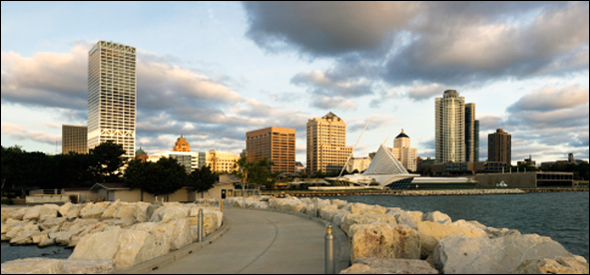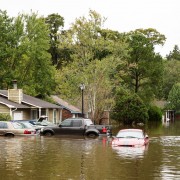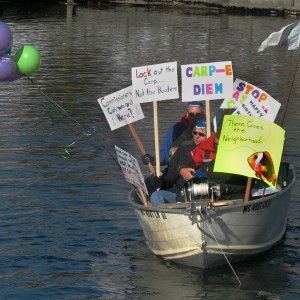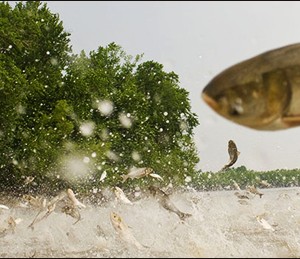Peter Gleick: Bottled Water Wars, and the War on Tap Water
There is a war going on. The target? Tap water.
In a month or two, I have a new book coming out from Island Press called Bottled and Sold: The Story Behind Our Obsession with Bottled Water. Look for it at your local… well, wherever you buy books now.
The book is a popular account of the reasons we buy bottled water, the manipulations of the private water bottlers to get us to buy it, the industry war on tap water, the history of weird claims made for bottled water, and much more. It explores the remarkable explosion in bottled water sales and the recent consumer revolt that is beginning to threaten sales.
But make no mistake. The war for what you drink continues.
Water Number: $4 a bottle. In the latest skirmish in the war on tap water, the sports arena that hosts the Cleveland Cavaliers basketball team — with the lovely name of the Quicken Loans Arena concession — has removed its drinking water fountains. The only way for thirsty fans to get water now is to wait in line at the concessions counter for a free small cup or pay $4 for bottled water or try to drink water from the bathroom faucets.
This isn’t the first time a sports arena has run into trouble over water fountains. In September 2007, the University of Central Florida opened its brand new 45,000 seat football stadium with a sell-out crowd on hand to watch the UCF Knights battle the Texas Longhorns. The loser? The fans. With temperatures near 100 degrees the crowd found out the hard way that the stadium had been built without a single drinking fountain (in apparent violation of building codes). Security concerns kept out personal water bottles. And the only water available (other than the taps in the bathrooms) was $3 bottled water, which quickly sold out. Eighteen people were taken to local hospitals and sixty more were treated by campus medical personnel for heat-related illnesses. After a massive public brouhaha, the University quickly retrofitted the stadium with water fountains.
So what’s up with the Cleveland Cavalier’s arena? A team spokesman offered the explanation that the fountains were removed to prevent the spread of bacteria and illnesses on the advice of the NBA and the International Association of Assembly Managers. But according to Gabriel Baird in the Cleveland Plain Dealer, the NBA and the IAAM both deny that they recommend removing water fountains.
An NBA spokesman said “We have not made any recommendations for teams to turn off water fountains.” The director of life safety and security for the International Association of Assembly Managers told reporters that the association recommends regular, thorough cleanings of all hard surfaces but not removing fountains. And Matt Carroll of the Cleveland Health Department noted that “There is nothing out there that suggests that water fountains are a particular concern.”
A local 17-year old fan, Matt Woods of Wadsworth, Ohio cut through all the fog of excuses when he noted, “The reason is so you have to buy a $4 water.”
This story is doubly ironic. In July 2006, Cleveland was the butt of an abusive advertisement by Fiji Water — a controversial water bottler that ships water from the South Pacific to markets around the world. The city fought back with water-quality tests and discovered that compared to Fiji Water, the city’s tap water was as high, or even higher in quality, won blind taste competitions, and was a thousandth the cost.
We must fight to save our tap water — both the quality and access. Public spaces must have public water fountains: new models offer filtered, chilled, and even ultraviolet-purified water. Our municipal systems must continue to improve the quality of the water they deliver and educate consumers about the bargain they’re getting with tap water. And our national water-quality laws must be both enforced and strengthened to ensure our water remains safe, tasty, and protected.
Water fountains must be considered, protected, and treated as assets, not liabilities.
Peter Gleick
Dr. Gleick’s blog posts are provided in cooperation with the SFGate. Previous posts can be found here.










Another concern when trying to fill a reusable water bottle: public bathroom taps often have only warm water and not cold water…
I enjoyed your Coast-to-coastAM interview and agree with you.
I still think that since only a minuscule amount of municipal water is for ingestion, it really doesn’t make much sense to purify all of it as if it were all consumed unless it’s really cheap to do so. Here in Scottsdale Arizona, “brown” water and canal water is used for many things including irrigating crops and watering golf courses. I don’t think much water is “wasted”.